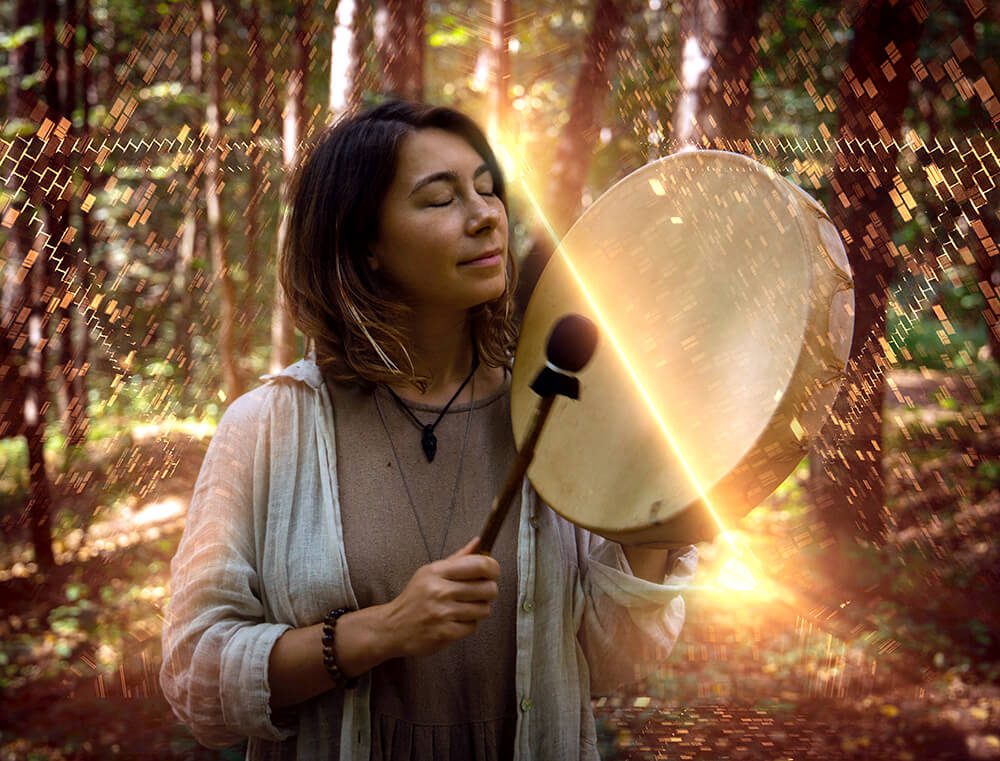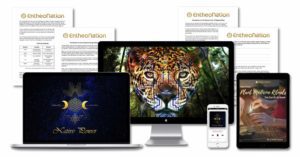Core Shamanism: Ancestral Rituals in Modern Times

Shamanic practices have been commonplace in human cultures worldwide since ancestral times. Today, people all over the world use core shamanic techniques to access the spirit world and facilitate healing.
Shamanic practices have been commonplace in human cultures worldwide since ancestral times. Across all inhabited continents, humans have, for thousands of years, been using shamanic methods to connect with divinity, facilitate healing, solve problems and mysteries, strengthen social bonds, and grow individually and as a community.
While many indigenous cultures have their own style of shamanism, common practices can be identified across traditions and geographies. Core shamanism recognizes these standard methods as practices that anyone can study and exercise.
Before we dive into what it takes to become a practitioner of core shamanism, let’s first define what this concept entails and some key elements that make it up.
What is Core Shamanism?

Screenshot from The Way of the Shaman: The Work of Michael and Sandra Harner
The term originates from Michael Harner, who, in his book, The Way of the Shaman, establishes core shamanism as an array of shamanic techniques that are not specific to any cultural context, and that can be theoretically taught to anyone with a genuine desire to learn – this is why core shamanism is also referred to as ‘universal’ shamanism.
This has made the practice of shamanic healing more accessible to spiritual seekers from a contemporary Western background. Unlike Amazonian or Native American shamanism, core shamanism does not encompass ceremonies in its practices.

Susan Mekelke, JD
Core shamanism involves the practitioner traveling between the spirit world and ordinary consciousness and using helping spirits to promote healing in other individuals, their communities, themselves, and their relationships. In her article, Core Shamanism and Daily Life, Susan Mokelke, J.D., Executive Director of the Foundation for Shamanic Studies, explains that “the shamanic power comes from the helping spirits.”
“If you make strong connections with these spirits, then they may give you the power to help others and to ease pain and suffering,” she writes.
Practitioners of core shamanism are trained in shamanic non-drug techniques which typically do not include ingesting psychoactive substances, such as shamanic drumming, soul retrieval, medicine wheels, and working with power animals. Let’s dive a little deeper into each of these concepts.
Power Animals

In shamanism, power animals are guiding spirits that can support humans throughout their lives. Power animals are there as guardians and can be uncovered through shamanic journeying.
“Power animals can represent you and your essence, and your work in the spirit world,” says Marc-John Brown, practitioner of modern shamanism, founder of Jungle Wisdom Academy, and faculty member of the Plant Spirit School Integration Coach Certification Program, which teaches students to use these ancestral healing modalities in their integration coaching practices.
Power animals represent the essence of that entire species and can provide emotional support during difficult moments. Once a practitioner has built a relationship with their power animals, they can draw on their wisdom in challenging situations. According to Brown, they may also help them prophesize and warn them about the outcome of a certain decision, acting as omens for the future.
Shamanic Drumming

Shamanic drumming is a key part of shamanic practices throughout the world and is used in core shamanism for entering into trance states and uncovering hidden spiritual resources. According to Michael Harner,
“After having personally practiced shamanism, shamanic healing, and shamanic journeying for more than half a century, I can say that there is nothing I have encountered in reports of the spiritual experiences of saints, prophets, psychedelic drug experimenters, near-death survivors, avatars and other mystics that is not commonly experienced when following classic journey methods using a drum.”
The drumming uses a repetitive rhythm at around three to four beats per second and allows practitioners to journey into the spirit world and facilitate healing and transformation. The sound of the drum is often said to represent the heartbeat of Mother Earth and can be used as a way to make an offering, blessing, and prayer to the Earth and all spirits of nature.

Soul Retrieval
Another key element of core shamanism is soul retrieval. According to Harner, anyone who has experienced trauma may have also experienced the loss of a part of their soul. With proper training, a shamanic healer can search for the lost piece of the soul and restore it.
Soul loss can come from abuse, prolonged pain or grief, addictions, near-death experiences, loss of one’s personal power, being rejected or abandoned, and other instances of suffering.
Someone experiencing soul loss might experience symptoms such as memory loss, fear and anxiety, periods of depression, feeling like they’re missing a part of themselves, insomnia, purposelessness, and physical and mental fatigue, amongst others.
Soul retrieval is the practice of uncovering these lost fragments; it exists as a practice in cultures all over the world.

Typically, it’s performed by a shaman who enters a trance state and journeys to the spirit realm to look for the missing piece of the client’s soul. Upon locating the lost part, the shaman will reintegrate it into the client’s soul. This can be done by blowing the returned essence back into the body as the client breathes deeply and absorbs the light, as described by Sandra Ingerman, author of Soul Retrieval: Mending the Fragmented Self.
Medicine Wheel

Medicine wheels have been used by indigenous cultures for millennia, and were a key part of many ancient societies. The wheel is generally divided into four parts, and each quadrant is associated with qualities such as directions, colors, seasons, or elements.
According to Jans Engels-Smith, founder of LightSong School of Shamanic Studies and Energy Medicine, “the reason we work with the Medicine Wheel is so as to develop a lens to understand our life, to make progress within it, and to make peace with ourselves for the stages we find ourselves experiencing, in different areas of our life.”
The Medicine Wheel honors the belief that all things on earth are interconnected and can provide guidance for understanding one’s own philosophy. Engels-Smith explains that the Medicine Wheel is open to interpretation and that shamanic practitioners can develop their own version in communication with their guides and spirits.
Can I Become a Practitioner of Core Shamanism?

In theory, yes. The practices of core shamanism are available to anyone serious about learning them and are chosen voluntarily, as opposed to the person being chosen by the spirits, like in certain shamanic lineages.
As with most things, some people may be more naturally gifted at energetic work than others. However, practitioners claim that most students are able to learn the techniques surprisingly quickly.
While core shamanism is not tied to any particular culture, it’s advised that its students should take the time to learn about the indigenous traditions from which its techniques are derived, such as various branches of Amazonian or Native American shamanism.
As shamanic practices have evolved over millennia in the context of indigenous lineages, anyone wishing to attain an understanding of shamanism should also have a deep grasp of its roots, and what it means to be a shaman in various indigenous cultures.
Becoming a practitioner of core shamanism requires dedication and commitment, but its returns are many. Equipped with the skills to navigate the spirit world, those trained in core shamanism have the power to bring healing to themselves and their communities.
Interested in accessing shamanic states of mind, getting in touch with your spirit guides, and receiving intuitive guidance?

Check out the Native Power Shamanic Mind-Training Meditations special offer and experience fast and effective shamanic healing.
